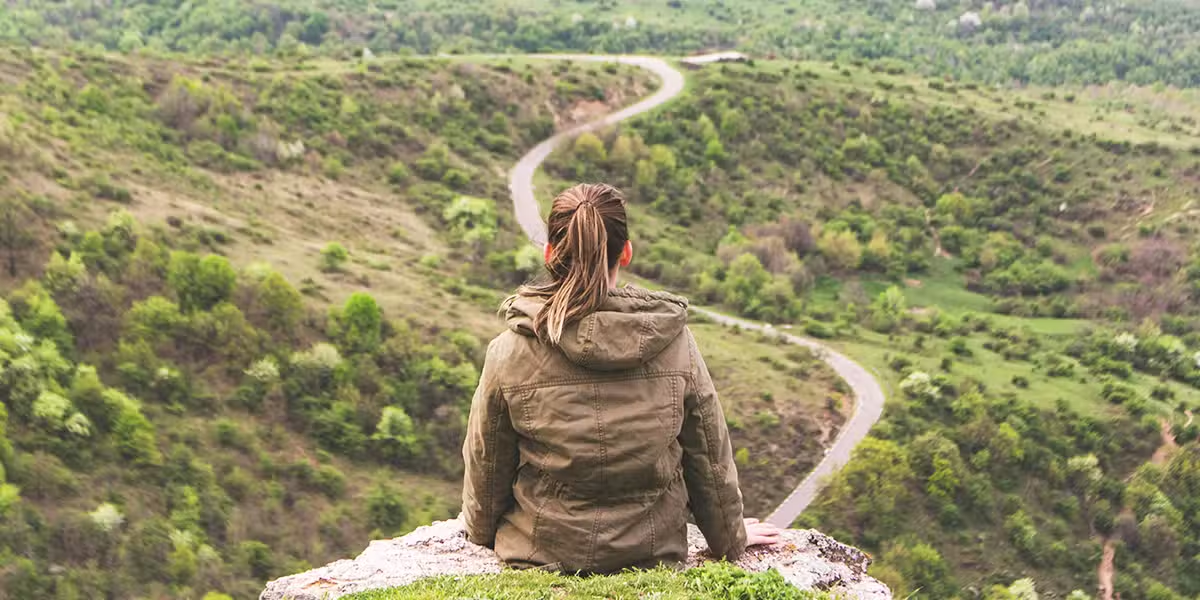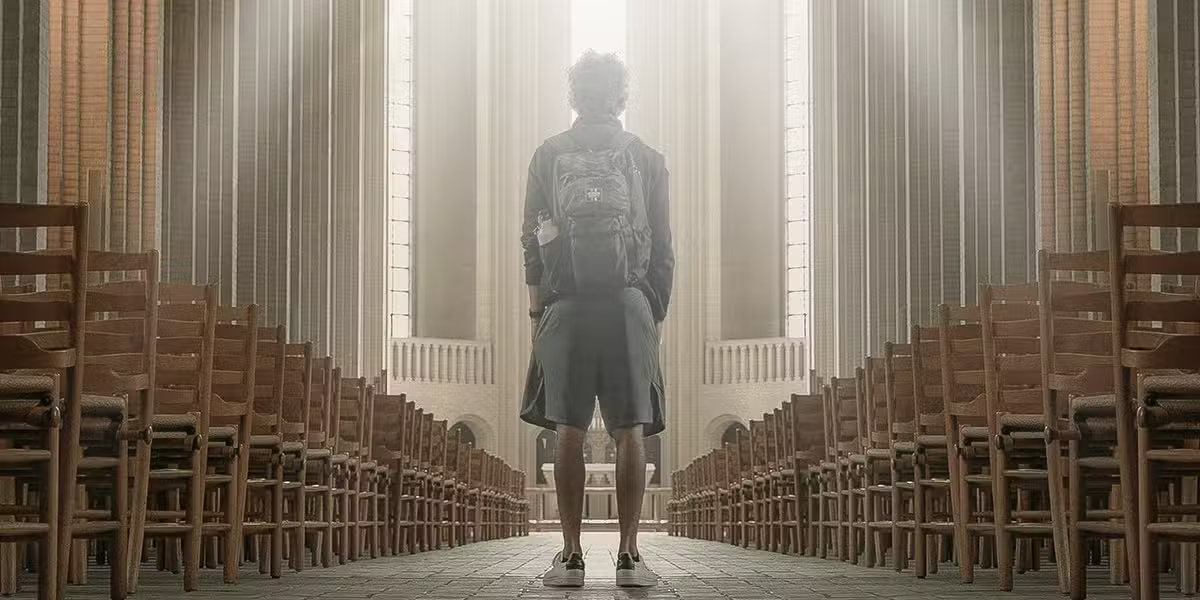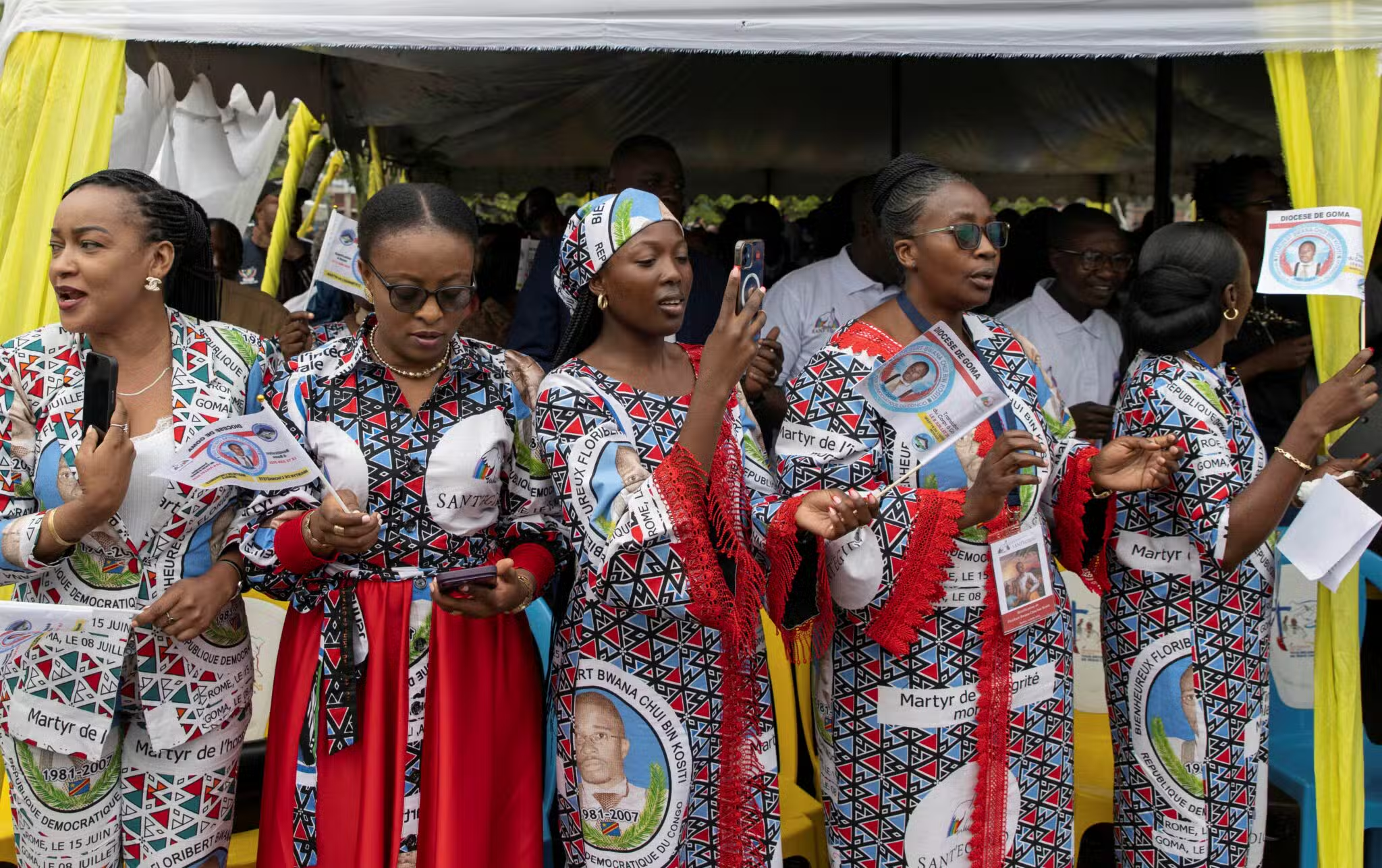FRIDLEY, Minn. (CNS) — COVID-19 is real at Totino-Grace High School in Fridley. Students have tested positive for the novel coronavirus since the school’s decision to offer mostly in-person learning for the 2020-21 school year. Teachers have contracted the virus, too.
The pandemic reached all the way to the administrative offices, with principal Cheri Broadhead testing positive in December and carrying out the mandatory quarantine.
And the school’s president, Craig Junker, has had quarantine periods as well.
His situation is different than most. His wife, Jennifer, works at the school, and all three of his children attend. In his mind, it was only a matter of time before the illness touched home, which it did in October when one of his sons announced that a Totino-Grace soccer teammate had tested positive.
“If one of our kids goes down, we all go down,” Junker said, noting that the son entered quarantine immediately and later tested negative for the virus. “That’s on our minds. So, we are particularly careful.”
Despite the risk — and the reality — of COVID-19, Junker made the decision in June 2020, with his staff’s full support, to open Totino-Grace for in-person learning in late August.
Using a long list of benefits as a motivator, Junker welcomed students, staff and teachers with confidence. And, having just six positive tests schoolwide since that date confirmed for him and others at the school that it was the right decision.=
Most Catholic elementary and high schools in the Archdiocese of St. Paul and Minneapolis made similar moves to in-person learning at the start of the school year, using varying models and also offering distance learning for families who preferred that approach or needed to quarantine.
School leaders and teachers speak confidently of their results during the first semester, pointing to positive feedback from students and parents, and even increased enrollment.
All of this is taking place in the midst of continued reluctance by public schools to open their buildings and offer in-person learning. While some public school districts are now reopening, many remain closed, citing high numbers of COVID-19 cases within their boundaries.
“Many schools just look at the county: ‘The county has bad (COVID-19) numbers, we’re all closing,'” Junker told The Catholic Spirit, archdiocesan newspaper. “A county is a good number to look at. A better number is what’s happening inside the school. What are your numbers?”
In addition to overall COVID-19 numbers at a school, he said another key statistic is what he calls “community spread.” It has to do with how much an infected student, teacher or staff member spreads the virus to others at school.
In the six cases at Totino-Grace, he said only one person spread it outside of the immediate family, and no one passed it to another person at the school.
Those are results he can live with, especially when weighed against all of the advantages of learning in the classroom. Other school leaders feel the same way.
“Everybody that we’ve talked to and the feedback we’ve gotten from students and parents is they love being here,” said Jim Hansen, president of Hill-Murray School in Maplewood, Minnesota, the first Catholic school in the archdiocese to open this school year, on Aug. 19. “It’s impossible to provide 100% proof that this is a safe environment, but we have taken every rational step we can to make it a safe environment.”
He noted that in his public school district, No. 622, 5% of public-school teachers tested positive for COVID-19 through Dec. 31 even though all their schools use distance learning, yet only 7% percent of his teachers have tested positive while spending four days a week with students under the school’s hybrid learning format.
He credits detailed planning, extensive protocols that included the recent installation of a high-tech air filtration system costing $100,000, plus the full buy-in of students, teachers and parents.
School leaders acknowledge the effort at all Catholic elementary and high schools has involved hours of extra work and lots of creativity to provide a learning environment that is both safe for students and effective for learning. But, leaders are confident of the learning models they use, and the results they have achieved.
At Totino-Grace, classrooms are limited to 15 students per class session to create the proper amount of social distancing, with the other students — up to a dozen or so — spending the classroom period in either the gymnasium or school commons.
Teachers make sure that all students rotate between in-class and virtual learning on a daily or weekly basis. Also, there are a handful of students whose families have chosen exclusively to use distance learning.
“On my desk, I have two computer screens, one that I present off of, and one with a camera in which I can see the kids who are at home or in other locations (in the school building),” said teacher Brian Litecky, 42, an alumnus of the school who has children learning in-person at St. John the Baptist School in New Brighton, Minnesota. “Ever since the first day of the school year, I haven’t had a full class. I’ve had kids scattered all over the place throughout the year.”
He believes having students in the classroom is best “for not just educational purposes, but for relationship purposes, too. It’s hard to develop an authentic relationship with a student through a computer screen. … Having conversations with their teacher face to face is priceless.”
Erin Schmidt, another Totino-Grace teacher whose children attend a Catholic elementary school, also believes in-person learning is best, even though she has had COVID-19.
Her positive test came in early August, so her quarantine ended by the time school started. She considers herself a valuable resource for those who wonder what it’s like to have the illness, which, in her case, produced only mild symptoms.
As a biology teacher, she sees in-person learning being especially important when it comes to labs. She shoots videos of experiments for students who are not in the classroom to watch, and has found creative ways to keep more kids close by, utilizing a back room off the main classroom to accommodate a few students, and even having some students observe at a safe distance from a hallway right outside the classroom.
Like Litecky, Schmidt values the rapport she’s built with students during in-class learning.
“If I was doing distance learning this whole time, I would not have the relationships I have with some of these students,” she said. “I had a girl crying on my shoulder the other day. She was telling me some really horrible things that she’s going through. Nobody’s going to tell you on camera, on a Google meet, that their grandma is going through cancer.”
This leads to the faith element that some point to as the biggest reason why Catholic schools are sticking with in-person learning.
Todd Flanders, who has been headmaster at Providence Academy in Plymouth, Minnesota, since it opened in 2000, wouldn’t have it any other way.
“We made that decision late spring that we were going to be serving (students in person) five days a week,” he said. “And then, we did something very funky. At the beginning of June, I went on video and told everybody that we will be starting in September five days a week in person or your money back.”
He made good on his promise and did not refund a single dime of tuition. In fact, the school’s overall enrollment grew this year by 55 students, with 196 students new to the school, for a total of 829 students in preschool through 12th grade.
Like other schools, Providence Academy dealt with COVID-19 cases and quarantines, but the school has stepped forward without missing a beat.
Staying open is driven by a mission that has fueled the school since its inception.
“What we do is based on why we do it,” Flanders said. “Why are we teaching children in the first place? They’re created in the image and likeness of God. They have innate dignity. God wants to see a trajectory of their growth, and we have a vocational privilege and responsibility to be there for them, if at all possible.”
By Dave Hrbacek | Catholic News Service







News & Commentary
Following safety precautions, Catholic schools’ in-person learning a success
FRIDLEY, Minn. (CNS) — COVID-19 is real at Totino-Grace High School in Fridley. Students have tested positive for the novel coronavirus since the school’s decision to offer mostly in-person learning for the 2020-21 school year. Teachers have contracted the virus, too.
The pandemic reached all the way to the administrative offices, with principal Cheri Broadhead testing positive in December and carrying out the mandatory quarantine.
And the school’s president, Craig Junker, has had quarantine periods as well.
His situation is different than most. His wife, Jennifer, works at the school, and all three of his children attend. In his mind, it was only a matter of time before the illness touched home, which it did in October when one of his sons announced that a Totino-Grace soccer teammate had tested positive.
“If one of our kids goes down, we all go down,” Junker said, noting that the son entered quarantine immediately and later tested negative for the virus. “That’s on our minds. So, we are particularly careful.”
Despite the risk — and the reality — of COVID-19, Junker made the decision in June 2020, with his staff’s full support, to open Totino-Grace for in-person learning in late August.
Using a long list of benefits as a motivator, Junker welcomed students, staff and teachers with confidence. And, having just six positive tests schoolwide since that date confirmed for him and others at the school that it was the right decision.=
Most Catholic elementary and high schools in the Archdiocese of St. Paul and Minneapolis made similar moves to in-person learning at the start of the school year, using varying models and also offering distance learning for families who preferred that approach or needed to quarantine.
School leaders and teachers speak confidently of their results during the first semester, pointing to positive feedback from students and parents, and even increased enrollment.
All of this is taking place in the midst of continued reluctance by public schools to open their buildings and offer in-person learning. While some public school districts are now reopening, many remain closed, citing high numbers of COVID-19 cases within their boundaries.
“Many schools just look at the county: ‘The county has bad (COVID-19) numbers, we’re all closing,'” Junker told The Catholic Spirit, archdiocesan newspaper. “A county is a good number to look at. A better number is what’s happening inside the school. What are your numbers?”
In addition to overall COVID-19 numbers at a school, he said another key statistic is what he calls “community spread.” It has to do with how much an infected student, teacher or staff member spreads the virus to others at school.
In the six cases at Totino-Grace, he said only one person spread it outside of the immediate family, and no one passed it to another person at the school.
Those are results he can live with, especially when weighed against all of the advantages of learning in the classroom. Other school leaders feel the same way.
“Everybody that we’ve talked to and the feedback we’ve gotten from students and parents is they love being here,” said Jim Hansen, president of Hill-Murray School in Maplewood, Minnesota, the first Catholic school in the archdiocese to open this school year, on Aug. 19. “It’s impossible to provide 100% proof that this is a safe environment, but we have taken every rational step we can to make it a safe environment.”
He noted that in his public school district, No. 622, 5% of public-school teachers tested positive for COVID-19 through Dec. 31 even though all their schools use distance learning, yet only 7% percent of his teachers have tested positive while spending four days a week with students under the school’s hybrid learning format.
He credits detailed planning, extensive protocols that included the recent installation of a high-tech air filtration system costing $100,000, plus the full buy-in of students, teachers and parents.
School leaders acknowledge the effort at all Catholic elementary and high schools has involved hours of extra work and lots of creativity to provide a learning environment that is both safe for students and effective for learning. But, leaders are confident of the learning models they use, and the results they have achieved.
At Totino-Grace, classrooms are limited to 15 students per class session to create the proper amount of social distancing, with the other students — up to a dozen or so — spending the classroom period in either the gymnasium or school commons.
Teachers make sure that all students rotate between in-class and virtual learning on a daily or weekly basis. Also, there are a handful of students whose families have chosen exclusively to use distance learning.
“On my desk, I have two computer screens, one that I present off of, and one with a camera in which I can see the kids who are at home or in other locations (in the school building),” said teacher Brian Litecky, 42, an alumnus of the school who has children learning in-person at St. John the Baptist School in New Brighton, Minnesota. “Ever since the first day of the school year, I haven’t had a full class. I’ve had kids scattered all over the place throughout the year.”
He believes having students in the classroom is best “for not just educational purposes, but for relationship purposes, too. It’s hard to develop an authentic relationship with a student through a computer screen. … Having conversations with their teacher face to face is priceless.”
Erin Schmidt, another Totino-Grace teacher whose children attend a Catholic elementary school, also believes in-person learning is best, even though she has had COVID-19.
Her positive test came in early August, so her quarantine ended by the time school started. She considers herself a valuable resource for those who wonder what it’s like to have the illness, which, in her case, produced only mild symptoms.
As a biology teacher, she sees in-person learning being especially important when it comes to labs. She shoots videos of experiments for students who are not in the classroom to watch, and has found creative ways to keep more kids close by, utilizing a back room off the main classroom to accommodate a few students, and even having some students observe at a safe distance from a hallway right outside the classroom.
Like Litecky, Schmidt values the rapport she’s built with students during in-class learning.
“If I was doing distance learning this whole time, I would not have the relationships I have with some of these students,” she said. “I had a girl crying on my shoulder the other day. She was telling me some really horrible things that she’s going through. Nobody’s going to tell you on camera, on a Google meet, that their grandma is going through cancer.”
This leads to the faith element that some point to as the biggest reason why Catholic schools are sticking with in-person learning.
Todd Flanders, who has been headmaster at Providence Academy in Plymouth, Minnesota, since it opened in 2000, wouldn’t have it any other way.
“We made that decision late spring that we were going to be serving (students in person) five days a week,” he said. “And then, we did something very funky. At the beginning of June, I went on video and told everybody that we will be starting in September five days a week in person or your money back.”
He made good on his promise and did not refund a single dime of tuition. In fact, the school’s overall enrollment grew this year by 55 students, with 196 students new to the school, for a total of 829 students in preschool through 12th grade.
Like other schools, Providence Academy dealt with COVID-19 cases and quarantines, but the school has stepped forward without missing a beat.
Staying open is driven by a mission that has fueled the school since its inception.
“What we do is based on why we do it,” Flanders said. “Why are we teaching children in the first place? They’re created in the image and likeness of God. They have innate dignity. God wants to see a trajectory of their growth, and we have a vocational privilege and responsibility to be there for them, if at all possible.”
By Dave Hrbacek | Catholic News Service